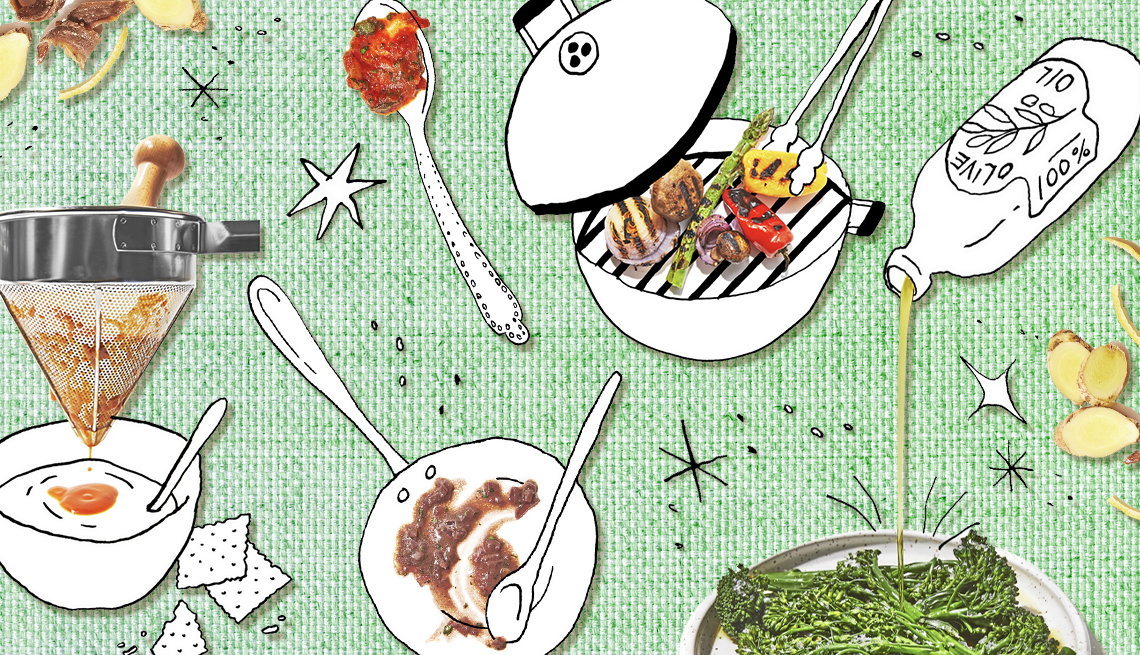Play all audios:
Restaurant chefs often rely on salt and fat (mostly butter) to differentiate their food from yours. But you can get restaurant-level flavor at home without restaurant-level calories. For the
past 25 years, I’ve eaten my way around the globe, traveling over a million miles in search of inspired foods. Here are some of the healthiest flavor hacks I’ve gleaned from great chefs
around the world. CARAMELIZE YOUR VEGGIES. Many vegetables contain natural sugars, but in their raw or steamed form they still taste vegetal. When, for example, carrots, cauliflower, sweet
potatoes and brussels sprouts are exposed to the high heat of an oven or grill, those natural sugars break down and caramelize over time, browning the surface and transforming it into an
addictive candy bomb. Set grills on high, ovens at 425°F, and roast for 20 to 30 minutes, or until browned. ADD HIGH-IMPACT, LOW-CALORIE FLAVORINGS. Citrus zest, citrus juice, fresh ginger,
fresh herbs and fresh chiles can add brightness to a dish. Balsamic vinegar, miso paste, anchovies, Dijon mustard, soy sauce, Worcestershire sauce, fish sauce, harissa and
Parmigiano-Reggiano contribute a richer and deeper flavor. TURN YOUR PAN CRUST INTO A PAN SAUCE. All the browned bits and reduced drippings that cling to a pan as you brown proteins and
vegetables are full of deep, rich flavors. Leaving that roasty, toasty crust in the pan is like leaving money on the table. Add a splash of wine or stock and a few seasonings, reduce over
low heat for a few minutes, and you’ve got a savory sauce that will add a finishing flourish to whatever you are cooking in the pan. STRAIN IT. A chinois is a cone-shaped strainer made from
a superfine woven metal mesh. Strain a pureed soup through it and the resulting mouthfeel will make you swear the soup was made with heavy cream. TASTE AND ADJUST AS YOU COOK. It’s such a
simple mantra, but home cooks often get distracted while multitasking and forget to taste — thereby robbing themselves of the opportunity to fine-tune the saltiness, sweetness, spiciness and
acidity of a dish. Photographs by Caitlin Bensel / Illustrations by Liana Jegers PLATE LIKE A PROFESSIONAL. Chefs approach an empty plate like a blank canvas and arrange their food on it as
if it were a painting. Use garnishes and artful presentation to make delicate portions appear bigger and more inviting. SAVE THE BEST FOR LAST. Finish veggies and proteins with a judicious
drizzle of your very best olive oil and a pinch of flaky sea salt. Huh? Isn’t the goal to reduce fat and salt? True, but adding a little at the last minute will allow you to use a lot less
of both while cooking.

